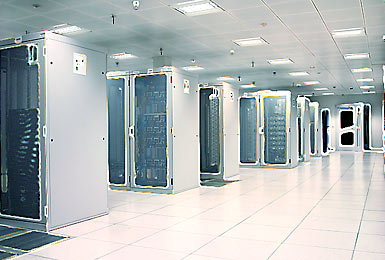Data Center Location Choices Led By Environmental, Power Concerns
Data center site selection is driven by environmental, power, connectivity, tax and incentive, construction, and labor concerns - in that order.
September 2010

Economics
Before anyone can build a solid data center strategy, a certain understanding of basic economics must be understood. In the data center market, conventional wisdom suggests that availability of existing data center inventory should be ample, and that single-tenant data centers improved with today's or almost to today's standards are everywhere.
This widespread perception is a fallacy. What we have in today's data center market climate is a classic economic imbalance, where demand is significantly outpacing supply. The "State of the Data Center Market," as I like to call it, is a violator of generally accepted economic principles led by a cognitive deception of what should be versus what actually is. Long story short, there's double, almost triple the demand for data center space (or more accurately gauged these days by power demand) than what the market supplies.
While the intricacies of this concept are another discussion outside of the scope of this article, it must be generally understood that data center demand is currently exceeding supply. Once this education of data center market economics has been addressed, a user can now move to build a strategy. Toward that end, let's consider the typical components that define a data center site selection strategy that most medium- to large-size data center users endure.
Drivers
Generally, there are seven primary drivers that are examined when searching for the ideal place to locate a data center. In order of preference, these aforementioned drivers include environmental, power, connectivity, tax impact, incentive considerations, construction costs, and labor.
• Environmental is a function of the risk and exposure to natural disasters. This typically has the highest weighting, as issues from seismic concerns to flood plain risks can temporarily shut down or completely wipe out a data center.
• Power is usually a large driver in that the electric bill can be one of the largest ongoing monetary line items, and will completely vary in overall weight depending on the projected power demands or capacities of a data center user. When considering power, pricing stability and/or volatility is also a viable and widely accepted driving factor, which can be mitigated in many ways, e.g., determine if a market is regulated or review the generation mix of a utility in a given market.
• Both tax impact and economic incentive considerations are extremely user-specific. Generally, as a medium to large user prospecting the market, you'll want to make sure that you look at what you're doing inside the walls of the data center (revenue production) and what a community may offer given your requirements (via capital and employment forecasts) on a city, county, and state level. Currently, there are 11 states with legislated data center incentives, and an in-depth analysis of the factors mentioned above could translate into millions of dollars of savings over the life of your data center.
• Construction cost data can easily be analyzed from a site selection perspective by benchmarking against a published national index.
• And finally labor - while usually a minimal consideration given weights of these other drivers (data centers typically employ less than 100 employees) - must be observed and can easily be assessed by an examination of IT workers in an area.
Project Announcements
Apex Plastics Opens Expanded Production Plant In Brookfield, Missouri
09/22/2014
Japan-Based Bridgestone Rubber-BSA Opens Biorubber Process Research Center In Mesa, Arizona
09/22/2014
SpencerARL Expands Its Plattsburgh, New York, Manufacturing Facility
09/22/2014
Hill International, Inc. Relocates Corporate Headquarters To Philadelphia, Pennsylvania
09/22/2014
Prysmian Group Plans $8.2 Million Expansion At Abbeville County, South Carolina, Manufacturing Center
09/22/2014
Japan-Based Kowa Kentucky Plans $8.3 Million Manufacturing Facility In Corbin, Kentucky
09/22/2014
Most Read
-
The Workforce Bottleneck in America’s Manufacturing Revival
Q4 2025
-
Rethinking Local Governments Through Consolidation and Choice
Q3 2025
-
Data Centers in 2025: When Power Became the Gatekeeper
Q4 2025
-
Tariff Shockwaves Hit the Industrial Sector
Q4 2025
-
Investors Seek Shelter in Food-Focused Real Estate
Q3 2025
-
The Permit Puzzle and the Path to Groundbreaking
Q3 2025
-
Supply Chain Whiplash Reshapes CRE
Q3 2025